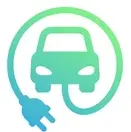Sorry if this is a dumb question. I currently drive a hybrid and am looking to upgrade in the next 1- 2 years to either PHEV or full EV. In either scenario, I envision most of my charging will be done at home. However, if I go full EV, I will eventually need to charge in public.
I’ve read it varies from charging network to charging network, so I figure I’d ask EV owners what their experiences are like. I really don’t like the idea of relying on an app or monthly subscription or anything like that.
So, is a debit card more or less guaranteed to be accepted, and if so, are the rates significantly higher than some kind of membership option?
Edit: In the US if it matters.


This is going to be a bit long. If you want a better explanation, here is an excellent (albeit a little outdated) video on the subject: https://youtu.be/Iyp_X3mwE1w
BEVs are a little more complicated, but not that much. There’s 3 main levels of charging to be aware of.
Level 1- 120v AC charging. Connect to a standard (and hopefully isolated) wall outlet. Your charging cable delivers this straight to your car, which then converts it to DC to charge the battery. Also known as trickle charging, it adds about 3 miles of range for every hour spent charging. It is almost never seen outside of home charging.
Level 2- 208/240v AC charging. Similar to the above, except you either have a 240v outlet or the charging cable) station is hardwired directly. Specs vary, but common configs are 5-10 times (7-12 kW) as fast as level 1. Still delivers AC directly to your car. This is also what you see at hotels, parking garages, etc where you are not going to be sitting there waiting on it. The required infrastructure is only some heavy-duty AC electrical cables and a way to bill you. Levels 1 and 2 use the J-1772 connector. Tesla calls theirs Destination Chargers.
Level 3- DC Fast Charging. This is an interesting idea- why limit yourself to the (relatively) puny charger you have onboard the vehicle? Or bypassing the normal limits of how thick a cable must be? These chargers, using the Combined Charging System (CCS) standard have an extra set of very thick pins that connect directly to the battery system. They deliver as much as 350 kW (depending on car model/capabilities) of DC power, straight into the battery system. They also have water-cooled cables to deliver that much power without an unwieldy cable. These are what you see at truck stops and places where people are going to be waiting for the charge to complete. Tesla calls theirs Superchargers.
The Tesla connector was recently opened up to the world as the North American Charging Standard, or NACS. Many other manufacturers have already announced a switch to this. For the J-1772 connector (levels 1 and 2), this is basically the same thing in a different shape. It’s even electrically compatible, so a dumb adapter will work. But what’s different is that the charging pins are much, much bigger. It can handle a level 3 DCFC on the same pins, albeit with some additional circuitry to handle these different modes.
Here is an alternative Piped link(s):
https://piped.video/Iyp_X3mwE1w
Piped is a privacy-respecting open-source alternative frontend to YouTube.
I’m open-source; check me out at GitHub.